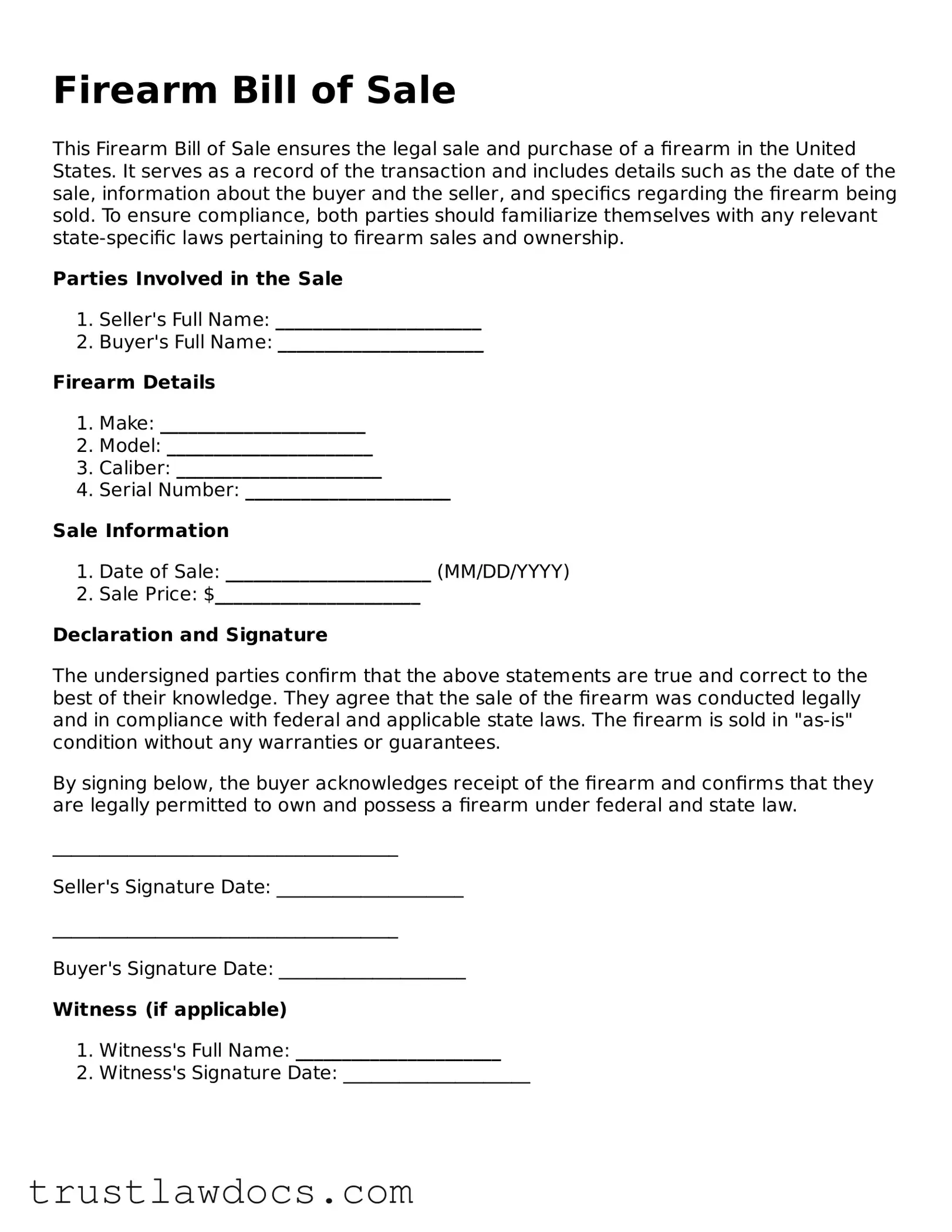The Firearm Bill of Sale form shares similarities with the Vehicle Bill of Sale in that both serve as tangible evidence of the transfer of ownership of a personal property item from one party to another. This documentation is essential in establishing the new ownership of the item in question, be it a car or a firearm, and it often includes vital information such as the make, model, and serial number of the item sold, alongside the personal details of the buyer and the seller.
Similarly, a Boat Bill of Sale form echoes the purpose and function of a Firearm Bill of Sale by documenting the transfer of ownership of a boat. This form, like the firearm counterpart, typically contains descriptions of the boat, details of the transaction, and the signatures of both parties involved. These forms are critical in registering the boat under the new owner's name and may also be required for insurance and warranty purposes.
A General Bill of Sale form, much like the Firearm Bill of Sale, is used for the purchase or sale of personal property, such as electronics, furniture, or other valuables, not categorized specifically like vehicles or boats. It serves as a legal record that a transaction occurred, outlining the item's description, the sale amount, and the parties' agreement, thereby offering protection and clarity for both buyer and seller.
The Real Estate Bill of Sale form, although used for property transactions, parallels the Firearm Bill of Sale in its role as a legal document confirming the transfer of ownership. It differs by focusing on real estate rather than movable property, but it similarly provides detailed information on the property sold, the agreed-upon price, and the identities of the involved parties, aiming to prevent future disputes and ensure transparency.
An Equipment Bill of Sale form is also akin to the Firearm Bill of Sale as it is utilized to record the sale and transfer of ownership of equipment, ranging from office machinery to heavy construction tools. It lists the equipment's condition, specifications, purchase price, and the parties' details, thereby safeguarding both the buyer’s and seller’s interests by proving the legitimacy of the transaction.
The Livestock Bill of Sale form draws comparisons to the Firearm Bill of Sale through its function in documenting the sale and transfer of animals such as cattle, horses, and sheep. It includes information about the animal(s), the sale amount, and the agreement's terms and conditions. This documentation is crucial for tracking ownership, pedigree, and ensuring health and vaccination standards are met.
Lastly, the Artwork Bill of Sale form is another document that shares its core purpose with the Firearm Bill of Sale by validating the sale and transfer of ownership of a piece of art. This can range from paintings and sculptures to digital art pieces. The form typically encapsulates details about the artwork, the transaction, and the parties, ensuring the buyer's legal ownership and the artist or seller's protection under the agreement.
